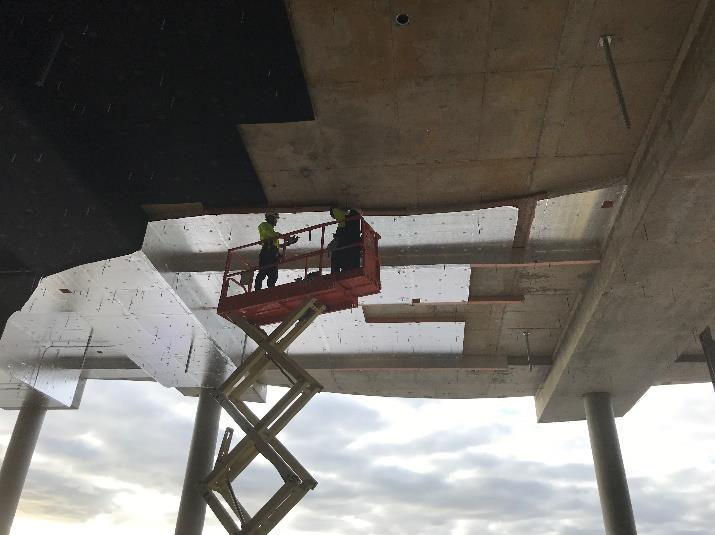Under Australian Standard AS 5637.1, soffit insulation installed as an exposed lining has since NCC2016 been required to undergo an AS ISO 9705 standard full room fire test, with materials installed on both the walls and ceiling of the test room.
The 2015 edition of Australian Standard AS 5637 Part 1, Determination of fire hazard properties — Wall and ceiling linings, was referenced in the National Construction Code 2016 Volume One (NCC) from 1 May 2016 with a three -year transition period. That Standard requires the test specimen to be fixed to three walls and ceiling of the test room rather than wall or ceiling alone. The transition period (set out in the NCC) allowed the use of test reports indicating the group number of wall and ceiling linings determined under versions of the NCC applicable before 1 May 2016, could be used up until 1 May 2019.
Compliance can also be achieved by other means, such as a Performance Solution that demonstrates compliance with all relevant Performance Requirements or at least equivalence to the Deemed-to-Satisfy Provisions of the National Construction Code; or a determination of the Building Appeals Board.
Further information about the operation of section 10(2) is provided in Minister’s Guideline MG-13 which is available on the VBA website, www.vba.vic.gov.au.
“While Australian insulation manufacturers have been aware of the expiry of the concession period, not all industry participants have shown the same level of due diligence when supplying and installing compliant insulation”, said Keith Anderson, Insulation Australasia’s Technical Spokesman.
“I think the intent of the NCC2016 was clear in addressing a recognised fire safety issue with the NCC as it tightened up on the testing method, and it gave manufacturers a generous three years to transition. It is also clear that this concession period ended on 1st May 2019.”
“Building regulators and practitioners need to be checking the credentials of all soffit insulation to ensure that Group numbers and Smoke Growth Rate Index (SMOGRARC) performance claims made are supported by a legitimate AS 5637.1 compliant ceiling and wall fire test report from a laboratory that is NATA accredited for the AS ISO 9705 test method.”
It is important that all building practitioners involved know how to recognise a legitimate NCC 2019 compliant soffit insulation test report. The following is a guide to the key questions that should be asked:
1. Does the test report state that the test is in accordance with AS 5637.1? e.g. AS ISO 9705 test with the specimen installed in the ceiling only is not acceptable for the determination of a Group Number under AS 5637.1.
2. Was the test conducted by a test lab accredited by NATA for the actual test method adopted?
3. Was the test specimen installation method consistent with how the product is installed in practice? e.g. is there any additional steel support, additional linings or caulking that may affect the result?
4. Was the specimen tested actually the product specified for the project? e.g. some products come with a variety of facing materials that can significantly affect the result in a fire test.
5. Does the test report declare the Group Number achieved?
6. Does the test report declare the SMOGRARC achieved?
RED Fire Engineers Technical Director MC Hui advocates extreme diligence to ensure that all testing is carried out by accredited testing laboratories.
“Our message to architects, builders and insulation installers is to ask for full test reports, not just test certificates, to ensure they are issued by a laboratory that’s accredited to carry out AS 5637.1 testing,” he said.
“Be diligent and check the authenticity of the fire engineer’s report.”
“The reports must confirm the testing and determination of the material Group Number was carried out in accordance with AS 5637.1.”
For further information on these changes to the NCC visit Technical Reports at: http://www.insulationaustralasia.org/resources/technical-reports/

 RSS Feed
RSS Feed